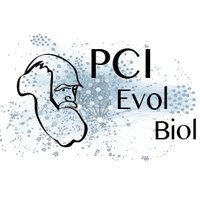Evaluated articles
 A list by Peer Community in Evolutionary Biology
A list by Peer Community in Evolutionary Biology
Articles that have been evaluated by Peer Community in Evolutionary Biology.
Showing page 8 of 10 pages of list content
-
Lacking conservation genomics in the giant Galápagos tortoise
This article has 2 authors:Reviewed by Peer Community in Evolutionary Biology
-
The insertion of a mitochondrial selfish element into the nuclear genome and its consequences
This article has 5 authors:Reviewed by Peer Community in Evolutionary Biology
-
Genome Plasticity in Papillomaviruses and De Novo Emergence of E5 Oncogenes
This article has 3 authors:Reviewed by Peer Community in Evolutionary Biology
-
Can Ebola Virus evolve to be less virulent in humans?
This article has 4 authors:Reviewed by Peer Community in Evolutionary Biology
-
Transgenerational plasticity of inducible defences: Combined effects of grand‐parental, parental and current environments
This article has 3 authors:Reviewed by Peer Community in Evolutionary Biology
-
Trait‐specific trade‐offs prevent niche expansion in two parasites
This article has 3 authors:Reviewed by Peer Community in Evolutionary Biology
-
-
A behavior-manipulating virus relative as a source of adaptive genes for parasitoid wasps
This article has 6 authors:Reviewed by Peer Community in Evolutionary Biology
-
-
How Much Does Ne Vary Among Species?
This article has 2 authors:Reviewed by Peer Community in Evolutionary Biology
-
Variation in competitive ability with mating system, ploidy and range expansion in four Capsella species
This article has 3 authors:Reviewed by Peer Community in Evolutionary Biology
-
Negative frequency-dependent selection is frequently confounding
This article has 1 author:Reviewed by Peer Community in Evolutionary Biology
-
-
Epistasis, inbreeding depression, and the evolution of self‐fertilization
This article has 2 authors:Reviewed by Peer Community in Evolutionary Biology
-
-
Field evidence for manipulation of mosquito host selection by the human malaria parasite, Plasmodium falciparum
This article has 16 authors:Reviewed by Peer Community in Evolutionary Biology
-
How do invasion syndromes evolve? An experimental evolution approach using the ladybird Harmonia axyridis
This article has 17 authors:Reviewed by Peer Community in Evolutionary Biology
-
-
MaxTiC: Fast ranking of a phylogenetic tree by Maximum Time Consistency with lateral gene transfers
This article has 9 authors:Reviewed by Peer Community in Evolutionary Biology
-